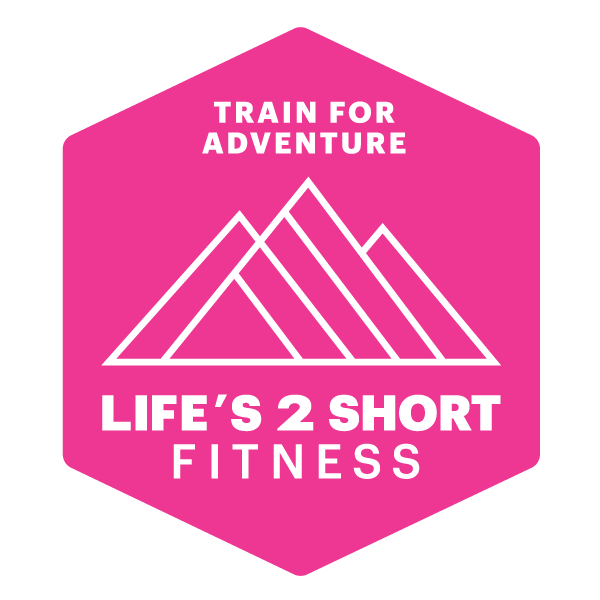5 exercises trail runners should be doing everyday
You love to run. Or maybe you don’t. Wherever you are on the spectrum, if you are planning on adding more mileage or training for an event, you need to make sure that your body is adequately prepared to take on the additional stresses running places on the body.
What do we mean by this?
Strength and conditioning!
Many runners neglect to strengthen the muscles they use when running. And not only those muscles, but the opposing ones too. In order to prevent injury and run at your best, you need to ensure that your body is strong and your training plan is well balanced. We like to refer to this as "pre-hab" work.
Here are 5 simple exercises you can incorporate into your routine today to ensure that you are ready to train and perform at your best! Do 3 sets of each exercise everyday.
1. Single leg squats or lunges:
This exercise works on balance, inner quad strength and helps to prevent muscle imbalances between legs. Start in a standing position and lift your left leg off the ground. Bend your right knee and sit back into your hips (like you are going to sit in a chair) ensuring that your knee doesn’t buckle in- it should track towards your last couple of toes.
As you bend, push your hips back, weight into your heels and keep your chest up- don’t look down. Bend to 45-90 degree angle and then straighten your leg back to starting position. Repeat 10-15 times and then switch sides.
2. Agility drills:
For footwork, balance, proprioreception and strength!
These drills are important for trail runners as it is a dynamic sport. Unlike road running which is mostly a repetitive motion on a single plane (moving forward), trail running involves navigating rocky terrain, sometimes leaping up, over or around objects both vertically and laterally. It only makes sense to hone in these systems and make sure we are working on small plyometrics to properly load and more importantly unload the muscles in our lower extremities to prevent injury, improve turnover and tackle technical terrain and downhill inclines with more grace.Try this simple line-drill starter set. Ideally you can do these on a soft surface like a soccer of football field barefoot to increase bio feedback.
3. Plank variations:
Your “core” (abdominal and pelvic muscles) is your body’s powerhouse. Literally. Your core stabilizes your pelvis, legs and trunk and all movements start by engagement of the core. Hold a plank on your hands for 15-60 seconds and then on your forearms for 15-60 seconds without a break. *Level 1= Plank on your knees, Level 2= plank on your toes. Make sure that your upper back is flat and lower back is not arched.
Next add some variations like side planks with a leg lift (for glute activation) and also a plank reach. Here are some core exercises you can add to your routine today:
4. Step-ups:
Have you ever seen a runner who seems to just shuffle their feet along? Maybe you can even hear their feet scraping against the ground as they raise their legs with minimum effort to take the next step. Or perhaps this is you!
You need strong hip flexors (translation= front of your thighs) to run strongly and with proper form. Another commonly neglected muscle group for runners: glutes! Luckily, this exercise, when completed properly targets both!
Start with something small like a stair and step up, focusing on pushing your weight into your heel and squeezing your glutes as you stand. Do 15 reps on each side as a warm-upset and then find something taller and more challenging (like a picnic table or park bench). Now you will have to get those hip flexors into play as you need to lift that knee up higher and really drive through the glutes to step-up. After you can easily complete 15-20 on each side at this height, try adding weights! Make sure throughout the exercise you keep your eyes ahead and core engaged.
5. Single leg deadlift:
This is another important exercise for runners that helps to improve balance, prevent imbalances between sides and retrains our backside mechanics. Through the running cycle, our hamstrings have an important function: to lengthen allowing the knee to extend and then shorten as we pull our heel back after footstrike. A single leg deadlift helps to strengthen and lengthen our hamstrings appropriately while challenging our foot and ankle stability.
When completing this movement, think about hinging through the hips and lengthening the hamstrings as you push your hips back and reach forward. Keep your chest up and eyes ahead. On the way back up squeeze your glutes. Try to keep your hips level and after you can complete 10 reps with perfect form try this on an uneven surface (like a bosu or stability disc) and adding a handweight too!
Join our live workouts year round!
L2S offers strength and conditioning workouts with professional coaches and physical therapists designed to help you become a stronger runner!
Learn more now HERE.


